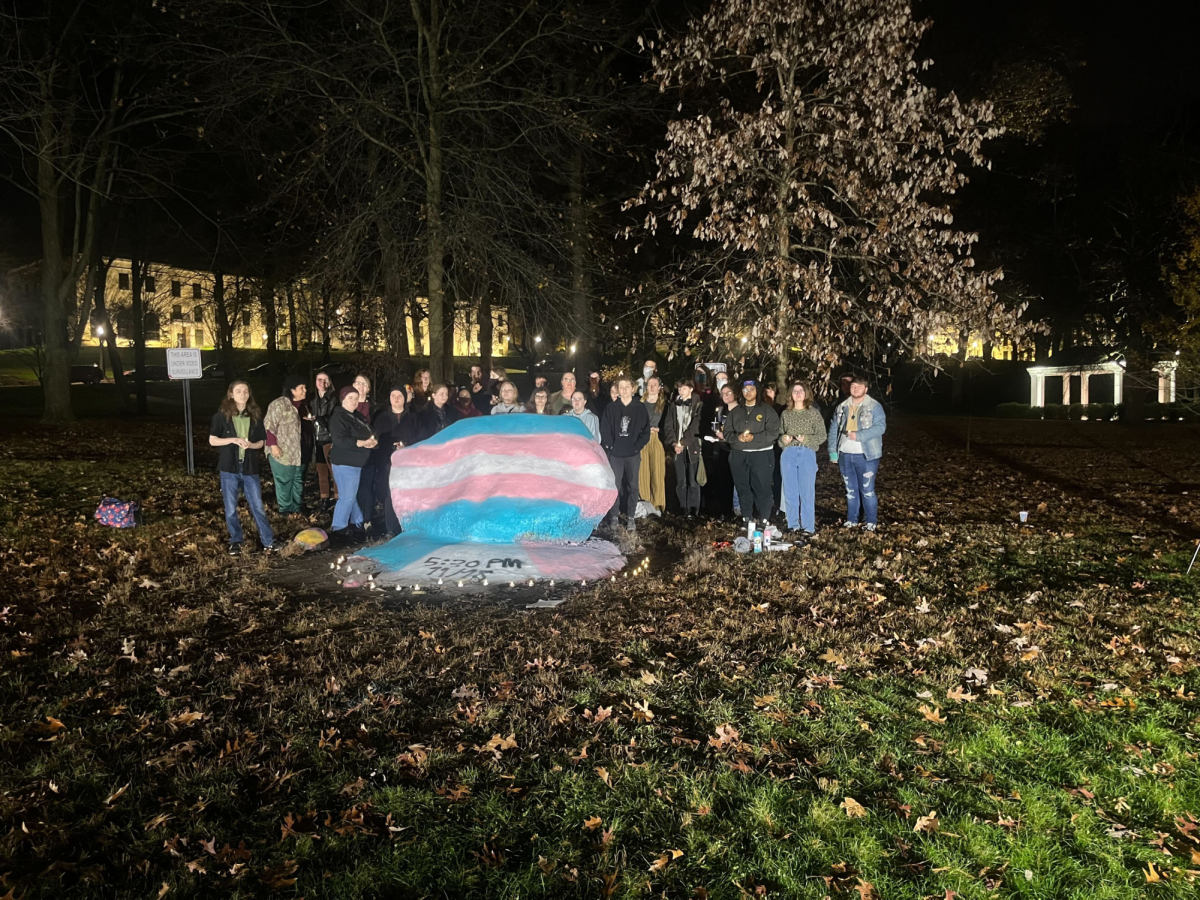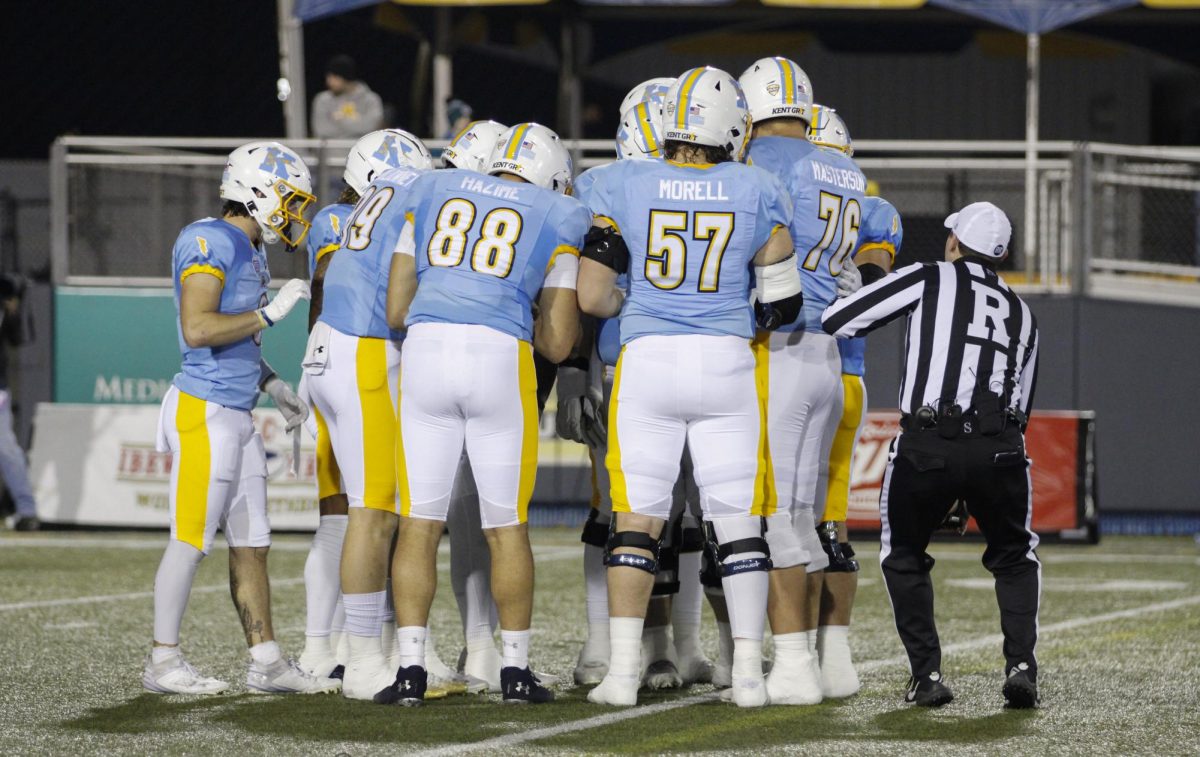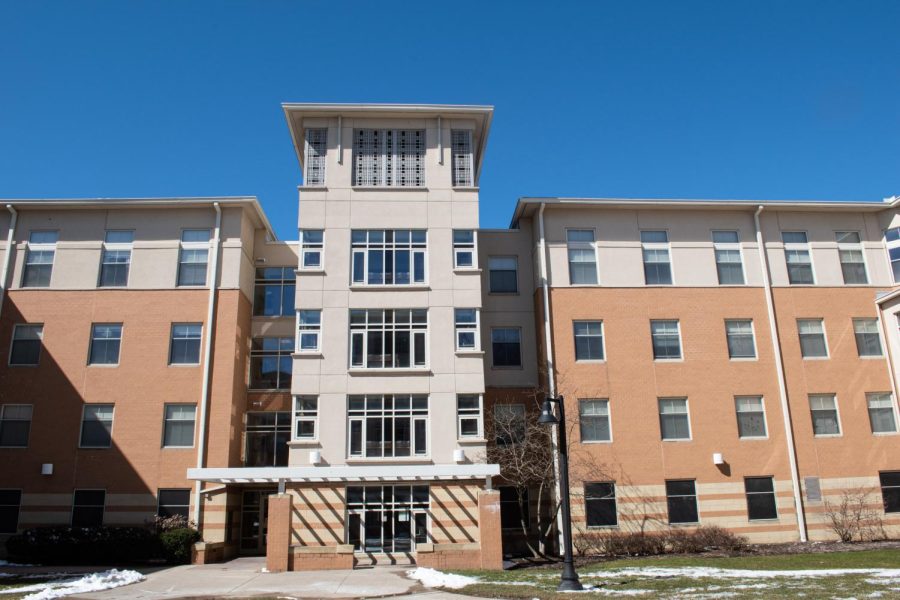Transformation 2028 aims to level set costs in the Division of Academic Affairs by realigning programs and reducing administrative costs through a reconfiguration of the university’s colleges.
“There’s a financial issue that’s been happening with higher ed since COVID times, and a lot of universities are facing financial issues,” said Melody Tankersley, senior vice president and provost. “We’re not immune to that, but we’ve also been very good at taking care of our finances over all of the years that we’ve operated.”
The main objective of T28 is to merge the current 14 colleges into fewer colleges that would cost less to operate, Tankersely said.
“T28 is not about shutting down programs,” Tankersley said.
The university overspent its budget by $18.6 million for the 2024 fiscal year, President Todd Diacon said in a letter to faculty and staff. Unexpected revenue padded the overspending, resulting in a $9.9 million deficit.
“And so we started looking at what we can control, and one of the things we wanted to do is look at our administrative structure — we don’t want to mess with our programs, we don’t want to mess with our faculty, we don’t want to mess with staff,” Tankersley said.
Tankersley and the Division of Academic Affairs want to keep students, faculty and staff at the center of the transformation and ensure no one loses anything in the process, she said.
Ohio State University and the University of Cincinnati take around 40% of the money that is made available from the state, Deborah C. Smith said, president of the Kent State Chapter of the American Association of University Professors.
“It is clear that the university has to do something fairly dramatic,” Smith said. “In fact, all universities, or at least almost all universities, in Ohio are going to have to do something similar because the basic problem is that the state of Ohio does not adequately fund higher education.”
Tankersley expects that the university will face declining enrollment, as fewer high school students are going to be applying for college. T28 is designed to reorganize the university’s academic units in preparation for decreasing enrollment which in turn, causes an expected decrease in university revenue.
“The state controls whether and to what extent the university can raise tuition, and all of the states right now are on this tuition guarantee model, which I think is really great for students, but it really means they can only raise the tuition on the incoming freshman class by whatever percentage the state allows them,” Smith said. “So the amount of revenue growth on the tuition side is minimal.”
In the Oct. 24 edition of “Talking with Todd,” Diacon said the university is taking these proactive measures to ensure it will not run another financial deficit in the 2025 fiscal year.
“The increase in our revenues are not keeping up with the increase in our expenses,” said Tracy Laux, chair of faculty senate and senior lecturer.
Addressing student concerns
Some students and student organizations such as United Students Against Sweatshops, have voiced concerns about the university not being transparent with T28’s initiatives and expressed worry about potential program cuts.
“Sunsetting programs and killing programs is not part of Transformation 2028, although on a regular basis, programs get sunsetted, but the ones that do are because there’s not very many students in it — and no student is harmed in the process — they’re going to graduate from that program if they’re currently in it,” Laux said. “Increase in tuition to students has nothing to do with Transformation 2028, same thing for room and board, it is dictated by the state.”
To begin the process of sunsetting a program, the faculty advisory committees at the department level recommend it. The beginning stages of sunsetting includes stopping the acceptance of new applicants to the program. Then decisions are made to either work to keep the program or make a plan to close the program down.
“Every student who is in that program must be able to complete their degree,” Tankersley said.
There is a misconception that program reviews, sunsetting programs, looking at course enrollments, enrollment caps are not all continually being looked at by the university; when in actuality the university is constantly looking at these factors.
This process did not arise from T28; it has always been an objective for the university, Laux said.
“This is what we do for a living all the time,” Laux said.
Tankersley said the university is now involving students in the process, looking for feedback, recommendations and student voices as T28 moves forward.
“We’re asking for recommendations from some of our student leadership groups for who would participate,” Tankersley said. “I’m hoping the student groups can help us understand all the feedback that’s coming in, give us recommendations, talk to other students and get information into what students want and how they want to participate in this.”
Tankersley and Laux encourage students and student organizations to reach out with questions and concerns.
“We’re here for students and we want to hear from them,” Tankersley said. “Anything that we can do to get in front of students, we really would love that opportunity.”
With the reconfigurations of colleges, programs are not expected to be physically relocated and the advising and professor to student ratio is not expected to be dramatically different as the process of T28 does not dictate that, Tankersley said.
“I would love to reassure all of our students that this is not a process designed to covertly close down programs,” Tankersley said. “This [T28] is a way that we are looking to make sure that we are financially sound and are able to respond to all of our students’ needs, not just right now, but actually into the future too.”
T28’s effect on university faculty
The university is in a hiring freeze for full-time and part-time faculty and staff, and a university travel freeze for all non-essential business.
In an email sent to faculty and staff, Smith said, “That we need to do everything in our power to help the university succeed in its efforts to avoid the fate of many of our sister institutions that have had to, or will soon, lay off faculty and close major programs.”
Faculty have shared concerns regarding the reconfiguration of colleges and having some academic units share a chair or director, Smith said in the email.
“I would say I feel hopeful, but not optimistic,” Smith said. “I do share many faculty members’ worries that this isn’t going to save enough money to avoid layoffs of faculty.”
Faculty contract buyouts will not be a part of T28, Tankersley said. Faculty contract buyouts are releases from instruction granted to individual faculty members by the chair in exchange for funding used to pay for a substitute teacher and to cover administrative costs.
“We haven’t had any faculty layoffs at Kent State, and they’re trying not to do any faculty layoffs through this process,” Smith said.
Administration is attempting to shrink the workforce within Academic Affairs by reducing the number of academic administrators and administrative support rather than lay off full-time faculty, Smith stated in the email.
T28’s effect on regional campuses and global education
Enrollment for the university’s regional campuses have declined from 9,131 enrolled students in the fall of 2021 to 5,718 degree-seeking students in the fall of 2024 on all regional campuses.
“What we’ve done is really pulled back and worked in a more centralized way, so that we’re scheduling classes across the entire region’s system,” Tankersley said. “That way we can have more robust classes and that helps reduce cost a lot. We’ve reduced the number of administrators there [at the regional campuses] considerably as well.”
Global education is not currently affected by T28’s reconfiguration of the college structures, Tankersley said.
“For the past year and a half, we started working with the faculty and leadership of the regional campuses to come up with a way to streamline the offerings of courses,” Tankersley said.
Tankersley explained that regional campuses have already been reducing administrative costs due to decreased enrollment and now the main campus plans to do the same.
“The way the regional campuses have been able to work in the past is very much like independent colleges: making decisions based on their own campuses,” Tankersley said.
Timeline for T28
The Provost began meeting with the deans, directors and chairs of university departments at the end of the spring 2024 semester to discuss the beginning phases of T28. Tankersley then worked with the Faculty Senate to discuss the reconfiguration possibilities that are displayed in the Transformation 2028 Playbook.
Faculty were asked to choose the reconfiguration models from the T28 Playbook that they thought made the most sense out of five recommendations and to provide their responses and feedback by Friday, Oct. 25.
T28 is currently being driven by the faculty as it moves forward.
It is expected to be narrowed down to two or three models from the original five that were recommended to faculty. Then be narrowed down again to develop a final overall plan to present at the upcoming Feb. 2025 meeting, which will decide on the final proposed models.
“In my way of looking at it, it [T28] definitely came about by what we can control in terms of our finances, but then it really is a huge opportunity for Kent State to take this moment to reassess and realign how we all work together,” Tankersley said.
Lauren Bischof is a beat reporter. Contact her at [email protected].










